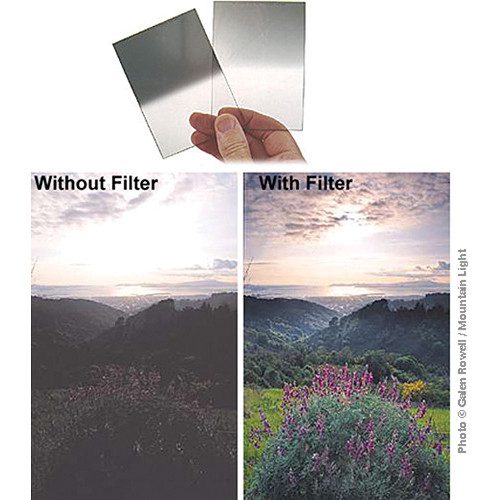
Galen Rowell, the legendary adventure and nature photographer, was one of my photographic idols from the time I first got into photography at the age of twelve. When I had the opportunity to work with him at his Mountain Light Gallery for what would be the last three years of his life, I was a sponge, soaking up every ounce of wisdom and insight that I could. In the process, I taught Galen a thing or two as well, but that’s another story.
Despite my experience as a working professional travel and landscape photographer, and a formal photographic education that included everything from large-format camera technique to creating my own Zone System (including mixing my own developer formulas from scratch), one photographic tool that I had never used before going to work at Mountain Light was Galen’s eponymous Graduated Neutral Density Filter set by Singh-Ray. In search of a way to get slide film to record the colors and tones he saw in nature, Galen had been experimenting with ring-mounted graduated neutral density filters since the 1970s, but as they limited the position of the clear-to-ND transition to either a 50/50 split right through the middle, or perhaps a 60/40 split, he often found them hopelessly limited.
Around 1990, he contacted Singh-Ray to find out what they could offer. During Galen’s first call to Singh-Ray’s shop in Venice, Florida, founder Bob Singh told him, “Just tell me what you want and we’ll make it for you. We do that for anyone. You photographers know your needs better than we do.” Galen and Bob embarked on a two-year project of development, testing, and refinement to create the best possible set of filters to tackle a broad range of high-dynamic-range situations in nature. The resulting set originally comprised four filters, with two-stop and three-stop hard and soft edged models. Galen later asked Bob to add 1-stop, 4-stop, and even 5-stop models. I remember Galen being giddy the first time he reviewed his film containing images made with the 5-stop model during a sunset on the California coast. He had taken a technically impossible situation and bent the light to his will, and Galen always loved getting his way.
Galen’s rectangular filters offered a very flexible solution for controlling varying ranges of brightness across a composition, by virtue of both the ability of the filter to be shifted in position up or down in the filter holder, and also the varying densities and edge hardness available in the filter set. The filters can be stacked too, for instance, positioning a hard-edge grad on the horizon line to control the brightness of the sky and using a soft-edge model to control a gradient of reflected light on a lake below. For those of us shooting in natural light using the narrow-latitude color slide films that were the industry standard for submission to magazines and stock picture agencies, Galen’s Singh-Ray filters opened up possibilities that had been entirely out of reach. Just as they became indispensable in Galen’s work in the last twelve years of his life, they became indispensable in mine. Many of my own favorite landscape images have been made with Galen Rowell Grad ND filters in front of my lens.
Even today, though digital imaging technology provides all sorts of methods to control the tonalities and colors rendered in a final image, Galen’s Singh-Ray filters still offer some significant advantages. First of all, they can save valuable time in post processing. Rather than shooting two or more bracketed exposures to capture good tone and detail in both the highlights and the shadows (for high-dynamic-range processing or exposure blending in Photoshop), use a Grad ND and capture the scene in a single frame. After all, blending multiple frames is fine when everything in the scene is stationary, but it often isn’t an option when working with moving subjects. Using a Grad ND also enables the capture of better quality detail, tonal gradients, and color in the shadows, not to mention the elimination of noise, by darkening the highlights with the filter and increasing the overall exposure for the shadows, rather than recovering the shadows and thereby boosting noise in post processing.
Galen’s Singh-Ray Graduated Neutral Density Filters are still an essential tool in my photography, and I have no doubt that if he were still with us Galen would still be using his too.
Justin Black
VISIONARY WILD

Workshops and travel for the passionate photographer
2200 19th St. NW, Suite 806
Washington, DC 20009
+1 202-558-9596 (office)
+1 202-302-9030 (mobile)
justin@visionarywild.com
www.visionarywild.com
www.justinblackphoto.com
Facebook| Instagram | Twitter
